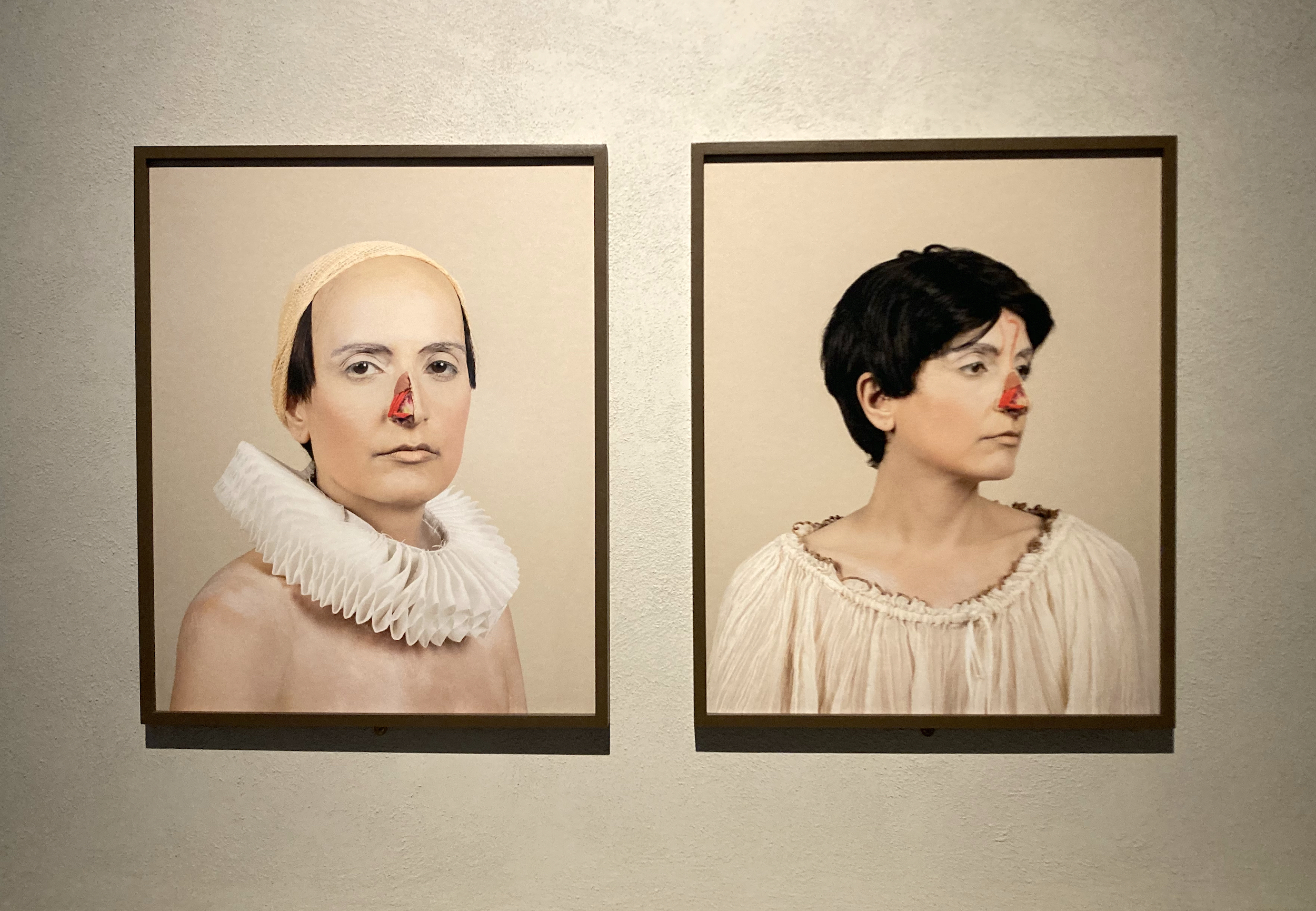LONDON — The Wellcome Collection is an unusual place. I mean that sincerely as a compliment. It’s a rare example of a scientific institution doing something genuinely bold and creative with its colonial history. There’s a degree of playfulness to their exhibitions, too, and their current show, The Cult of Beauty, is typically highly polished and prettily displayed. The exhibition’s focus is on the construction and consumption of beauty, its shifting standards “across time and cultures.” It’s a solid concept, mostly well executed. It’s an inevitable consequence of Wellcome’s collection and location that the show’s content skews European, though the curators make attempts to balance it: the first three objects in the collection are a copy of the bust of Nefertiti, a painting of Krishna, and a 16th-century Spanish “Black Madonna.” Opening the exhibition this way sets an expectation of more diverse beauty standards than just White, Eurocentric norms, to which the show doesn’t quite live up. There’s very little explanation of the Black Madonna, and nothing to clarify how this painting actually relates to beauty.
On a busy day, the space is incredibly crowded. The exhibits mostly run around the rooms’ edges, and shuffling from object to object can feel like being on a conveyor belt. There’s a lot of material to take in, not all of it well explained. In the first room are casts of three sculptures: Venus, representing feminine beauty; Idolino, representing an idealized masculine form; and a small Hermaphroditus, which would embody gender fluidity with its breasts and penis. This Hermaphroditus has been censored — castrated by a previous owner — but the gallery label is strangely coy, so unless you recognize the myth or the sculpture it’s not obvious. There’s also multimedia artist Cassils, posing like a bodybuilder in shiny red lipstick in “Advertisement: Homage to Benglis,” but Linda Benglis’s infamous 1974 Artforum advertisement, in which she wears nothing but a double-ended dildo and cat-eye sunglasses, isn’t displayed, so the reference will be lost on many viewers.

Wellcome is always at its best when it’s willing to be truly weird. In this case, the “Beauty Sensorium” full of “Renaissance Goo” — recreations of historical cosmetics displayed among grotesquely melting glassware and tiles in a kind of psychedelic apothecary — stands out as a fantastically strange and genuinely creative way to enliven the history of beauty, in all its messiness. This quirky interpretation of serious scholarly research is exactly what I had hoped for from the exhibition, but it makes the adjacent displays of collection holdings like medical corsets and cosmetic packaging all the more flat.
A section on racism and beauty, guest curated by the writer Emma Dabiri, focuses on contemporary and historical colorism and prejudice through objects like the Game of Goose, a bizarrely racist board game that originated around the 15th century where players “ascend” through different nationalities, getting paler as they go. The section’s limited attempt to show how beauty is cultural rather than universal is stymied by the chosen objects. Why use a copy of the “Rose of Versailles” manga to make an argument about blond hair and blue eyes becoming a beauty standard in Japan, when the story is set in 18th-century France and features entirely European characters? It’s interesting to see Josephine Baker’s “Bakerskin,” a darkening face powder sold to White Europeans who wanted to imitate her skin color, especially displayed next to the famously broad foundation shade range of Rihanna’s Fenty Beauty, but the show makes no reference to the appropriation of Blackness in so much contemporary beauty, and little about how Baker confronted and subverted the standards of her day.
In trying to sweep across so much time, the show over-generalizes and makes clumsy comparisons: for instance, juxtaposing Kim Kardashian’s Selfie book with an ancient Egyptian mirror is a boringly on-the-nose comment on vanity. Xcessive Aesthetics’ endless scroll of beauty TikToks is exhausting and obvious, as is an installation of makeup looks and slogans by the “beauty disruptor” project Makeupbrutalism. The show feels too trendy at times — the theme is less nuanced than it could be, and committing to the question of how beauty is sold, or how beauty trends change across time and geography, would be more effective than aiming for both and answering neither. But there are gems: It’s always good to see the Museum of Transology’s archive of personal trans histories through objects like lipsticks, packers used by trans men, and surgically removed chest tissue. Narcissister’s sculptural installation of her late mother’s treasured items is a poignant, intimate look at the beauty and belief we inherit, and Shirin Fathi’s photo series The Disobedient Nose is an acerbic take on the history of cosmetic surgery. Overall, this is a show that does little to challenge its audience, but provides an easy romp through the history of beauty.





The Cult of Beauty continues at the Wellcome Collection (183 Euston Road, London, England) through April 28. The exhibition was curated by Janice Li.

